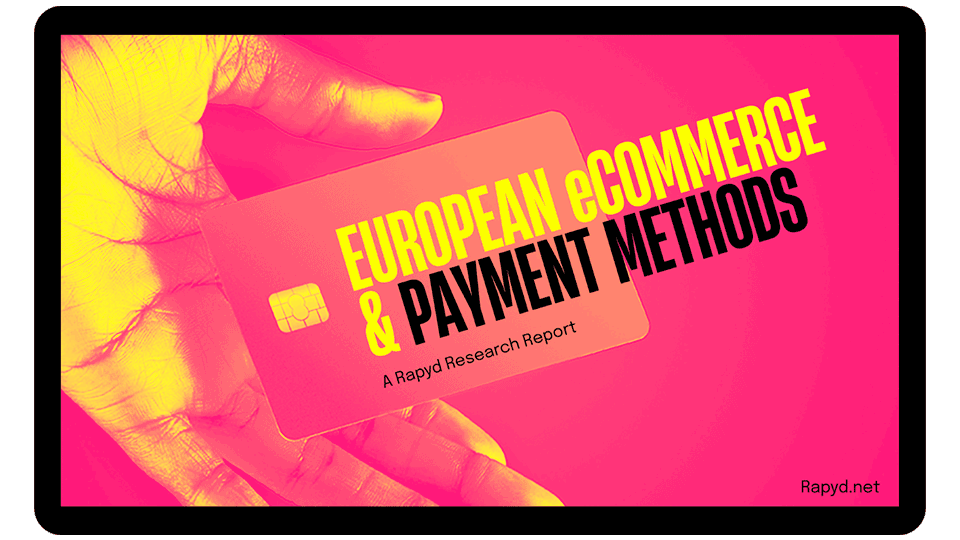Unlocking the European Market: Regulations, Taxes, and Choosing the Right Payment Gateway
Europe offers a lucrative market for US businesses. As with any international expansion, there are unique challenges to navigate, especially when it comes to processing payments. From understanding intricate regulations to the nuances of VAT, businesses have a lot of questions when expanding cross-border and overseas.
In this guide, we’ll cover the essentials of processing ecommerce payments in Europe and highlight why Rapyd stands out as the trusted global solution, supporting over a quarter of a million merchants worldwide.
What Are the Right Payment Methods?
With the vast array of payment options available, it’s essential to choose a solution that caters to the preferences of your target audience, especially when expanding to international markets like Europe.
- The Importance of Major Card Schemes:
Visa and Mastercard are two of the most recognized and widely accepted card schemes globally. Any online payment processing solution should support these major players. Not only do they offer a broad reach, but they also come with a reputation of trust and reliability. By accepting Visa and Mastercard, businesses can cater to a vast majority of online shoppers, ensuring that potential customers don’t abandon their carts due to payment restrictions. - Alternative Payment Methods in Europe:
Europe is a diverse continent with varying payment preferences. While card payments are prevalent, alternative payment methods (APMs) have gained significant traction. For instance, in countries like the Netherlands, local payment methods such as iDEAL are popular for online transactions. In Germany, direct debit and bank transfers are commonly used. Catering to these preferences can significantly boost conversion rates for businesses targeting European customers. - Real-Time Payment Methods
The demand for instant gratification has led to the rise of Real-Time Payment Methods. One notable example is the Faster Payments Service in the UK. This service allows for near-instant bank transfers, enhancing the user experience by providing immediate transaction confirmations. Such methods are not only faster but also come with enhanced security features and low fees.
How to Get the Right Payment Methods?
To ensure you’re offering the right payment methods, Partner with a payment solution provider like Rapyd that understands the intricacies of the European market. With Rapyd businesses can offer a diverse range of payment options, ensuring they cater to the unique preferences of their European customers.
VAT Tax Rates: An Overview
US businesses venturing into Europe need to understand Value Added Tax (VAT), a tax applied at every production stage of a product, from raw materials to final consumer purchase. The tax is reimbursed to previous buyers in the chain, making the final consumer the actual taxpayer. VAT is a percentage of the total cost, leading to consumers paying an additional amount on top of the product price, which the merchant then remits to the government. For instance, on a $100 product with a 15% VAT, the consumer pays $115, with the merchant sending $15 to the government.
VAT tax rates are not uniform across Europe. Each country sets its VAT rate, which can vary depending on the type of goods or services being sold. This means that the VAT rate you’ll need to apply could differ if you’re selling products in France compared to, say, Germany or Spain.
For a comprehensive overview of VAT rates by country, you can refer to PWC’s detailed guide: Value Added Tax (VAT) Rates. This resource provides information on VAT rates across the globe.
Understanding European Payment Regulations and Compliance
Payment Services Directive 2 (PSD2) and 3D SECURE (3DS2) for US Merchants
As a US merchant expanding into the European market, you’ll encounter a few terms and standards that might be new to you. One of the most significant is the Payment Services Directive 2 (PSD2).
What Is PSD2?
It’s a regulatory framework that aims to make electronic payments more secure, transparent, and standardized across the EU. At the heart of PSD2 is the concept of Strong Customer Authentication (SCA). SCA mandates that electronic transactions within the European Economic Area (EEA) require multi-factor authentication. This means customers need to provide at least two distinct types of identification before a transaction is approved.
What IS 3D Secure 2 (3DS2)
3DS2 is an authentication protocol that aligns with the requirements of SCA. When a customer makes a purchase, 3DS2 provides real-time authentication, ensuring the transaction is both secure and compliant with SCA requirements.
Why Is This Important for US Merchants?
If you’ve exclusively operated in the US, these standards might seem foreign. But here’s the basics: You’ll need to make sure that your payment solution supports these standards. Better yet, establish a legal entity in Europe and work with a local card acquirer that supports European security standards while also offering higher approval rates and lower fees compared to processing international transactions.
PCI Compliance in the EU
The Payment Card Industry Data Security Standard (PCI DSS) isn’t just a U.S. requirement. It’s applicable in Europe and around the globe. PCI DSS ensures that businesses handle credit card information securely to protect the company and its customers.
If your payments solution provider for Europe is PCI DSS compliant, you’re on the right track. However, if your business is storing payment details, it’s crucial to ensure your operations are PCI-compliant. A great starting point is the PCI Compliance Quick Guide.
How to Choose the Best International Payment Gateway for Europe
The global marketplace is expanding rapidly, with an estimated 5.3 billion global e-commerce users by 2027. To capitalize on this growth and extend their reach, businesses need to ensure smooth and secure transactions across international borders. One of the key components that facilitate this is an international payment gateway.
What is an International Payment Gateway?
An international payment gateway is a digital portal that facilitates online transactions between customers and businesses in different countries. It authorizes and processes payments in multiple currencies, allowing businesses to conduct and expand their operations globally. These gateways enable businesses to accept a wide range of payment methods, such as credit cards, debit cards, and digital wallets, enhancing the shopping experience for international customers.
International Payment Gateways Offer:
Global Market Access: International payment gateways act as a global payment passport, enabling businesses to accept payments from customers worldwide in their local currencies. This broadens the market reach and customer base.
Risk Management and Fraud Prevention: These gateways come with robust security measures, including advanced encryption and tokenization techniques, ensuring the safe transfer of sensitive data and enhancing customer trust.
Simpler Transactions: They provide a unified platform to handle various payment methods, improving customer experience and potentially increasing sales and retention.
Regulatory Compliance: Operating globally means navigating complex financial regulations. Payment gateways help businesses remain compliant with standards like PCI DSS and local financial regulations.
How to Choose the Right International Payment Gateway?
Understand Your Business Needs: Define what you need from a payment gateway based on your business’s size, target audience, industry, and growth plans.
Research Transaction Costs: Each gateway has its fee structure, including setup fees, monthly fees, and transaction fees. It’s essential to understand these costs and how they might impact your bottom line.
Consider the Supported Payment Methods: Ensure the gateway supports a broad range of payment methods popular in your target markets.
Why Rapyd is the Best Choice for Accepting Payments in Europe
Rapyd stands out as a trusted global solution that supports over 250,000 merchants worldwide. With Rapyd, you get
More Payment Options: Rapyd allows businesses to accept cards and over 900 local and alternative payment methods globally, ensuring you cater to the diverse payment preferences of European customers.
Real-Time Payment Methods: Rapyd supports real-time payment methods like Faster Payments in the UK, ensuring quick and efficient transactions.
Localized Checkout: Rapyd optimizes payment methods, currencies, and languages, offering every customer a friction-free checkout experience, improving trust, and boosting conversion and revenue growth.
Advanced Chargeback Management: With the integrated Rapyd Dispute Management System (RDMS), businesses can efficiently manage and address disputes before chargebacks occur.
Built-in Foreign Exchange: Rapyd simplifies the process of accepting, sending, and exchanging money in multiple currencies.
Local and Global Payments Expertise: Rapyd has expertise in local regulations and compliance and offers onboarding, KYC, and KYB services, paving the way for regional and global expansion.
With our understanding of the unique challenges and opportunities of the European market and a comprehensive suite of payment solutions tailored to this region, Rapyd is the go-to payments solution for businesses looking to thrive in Europe.





